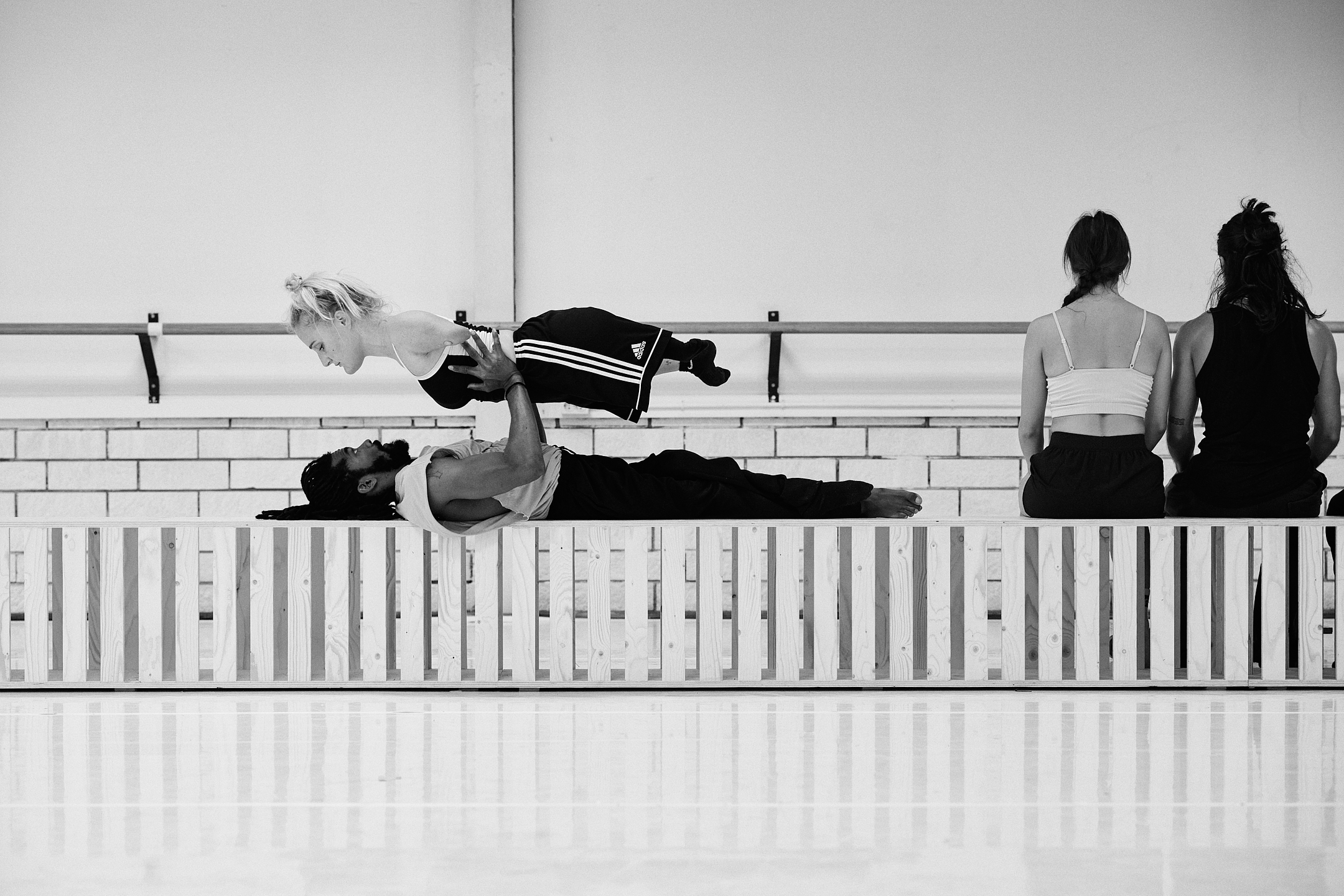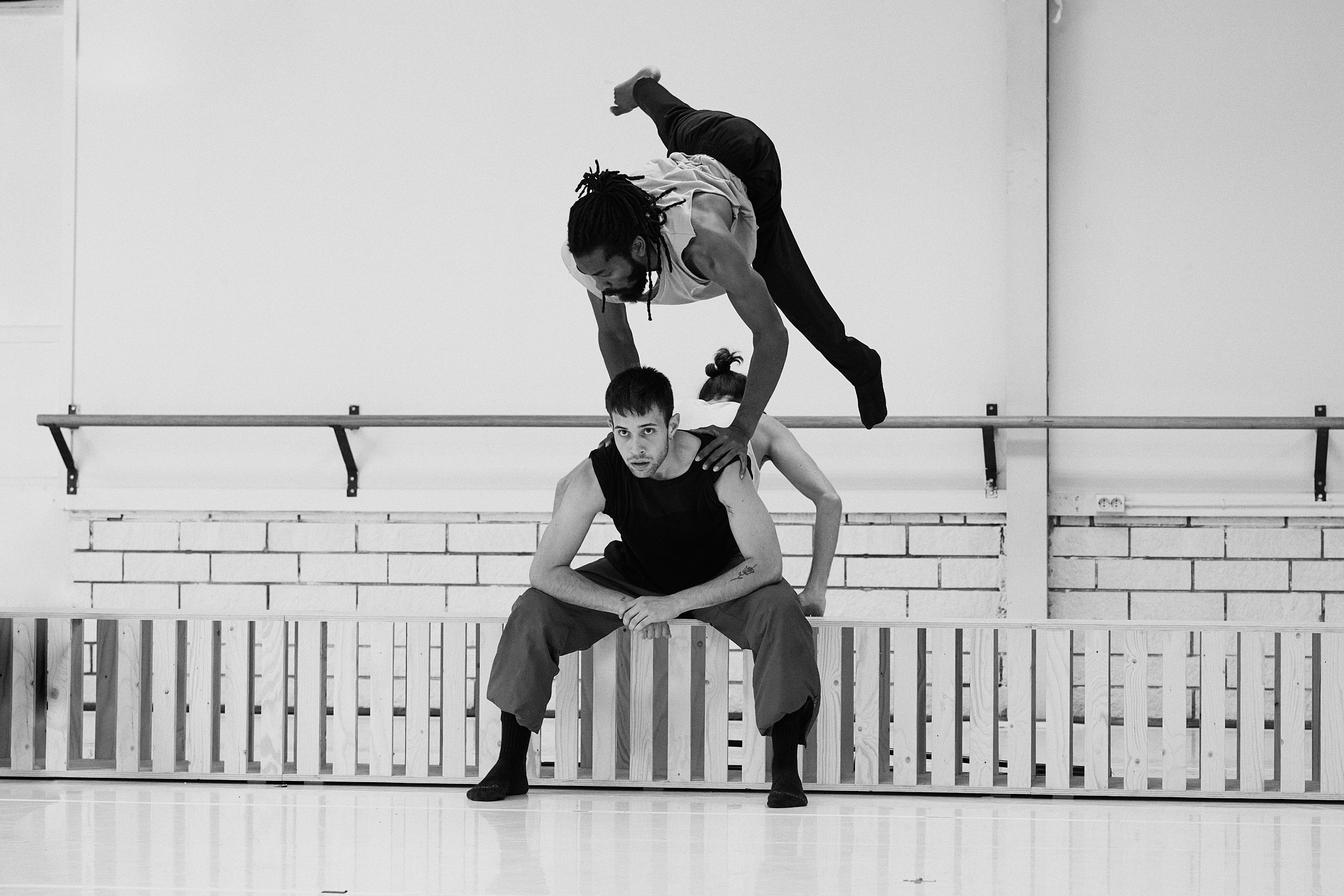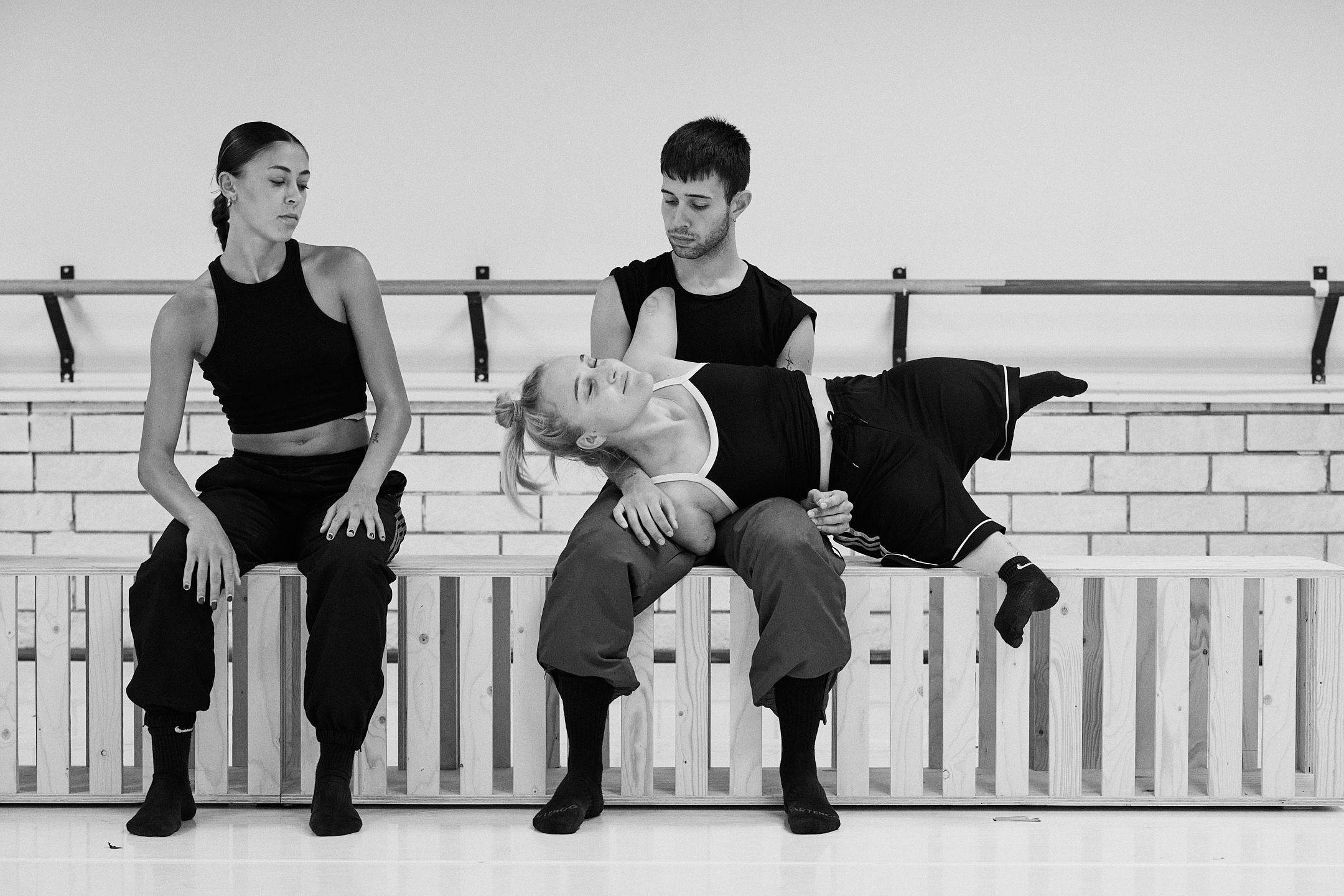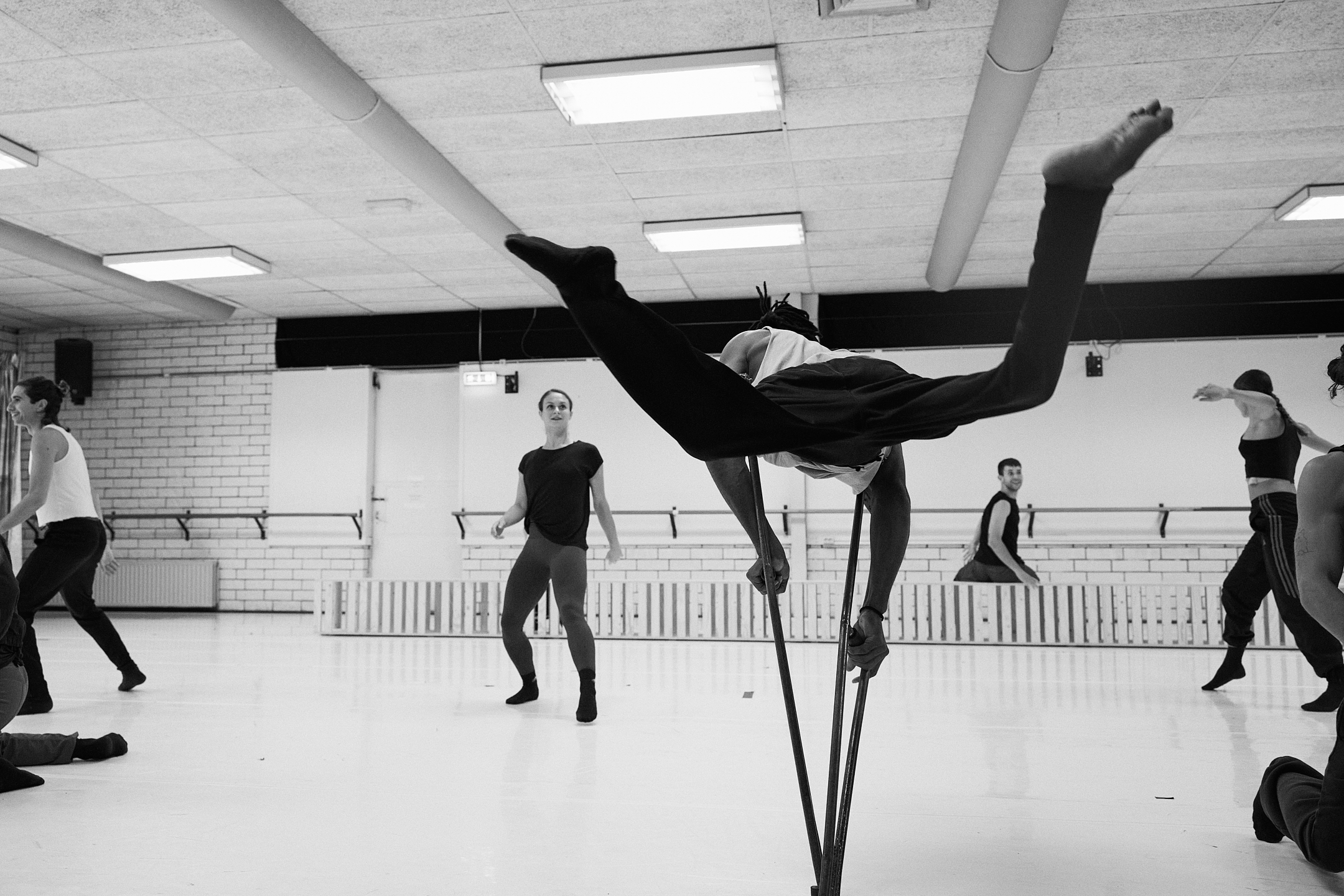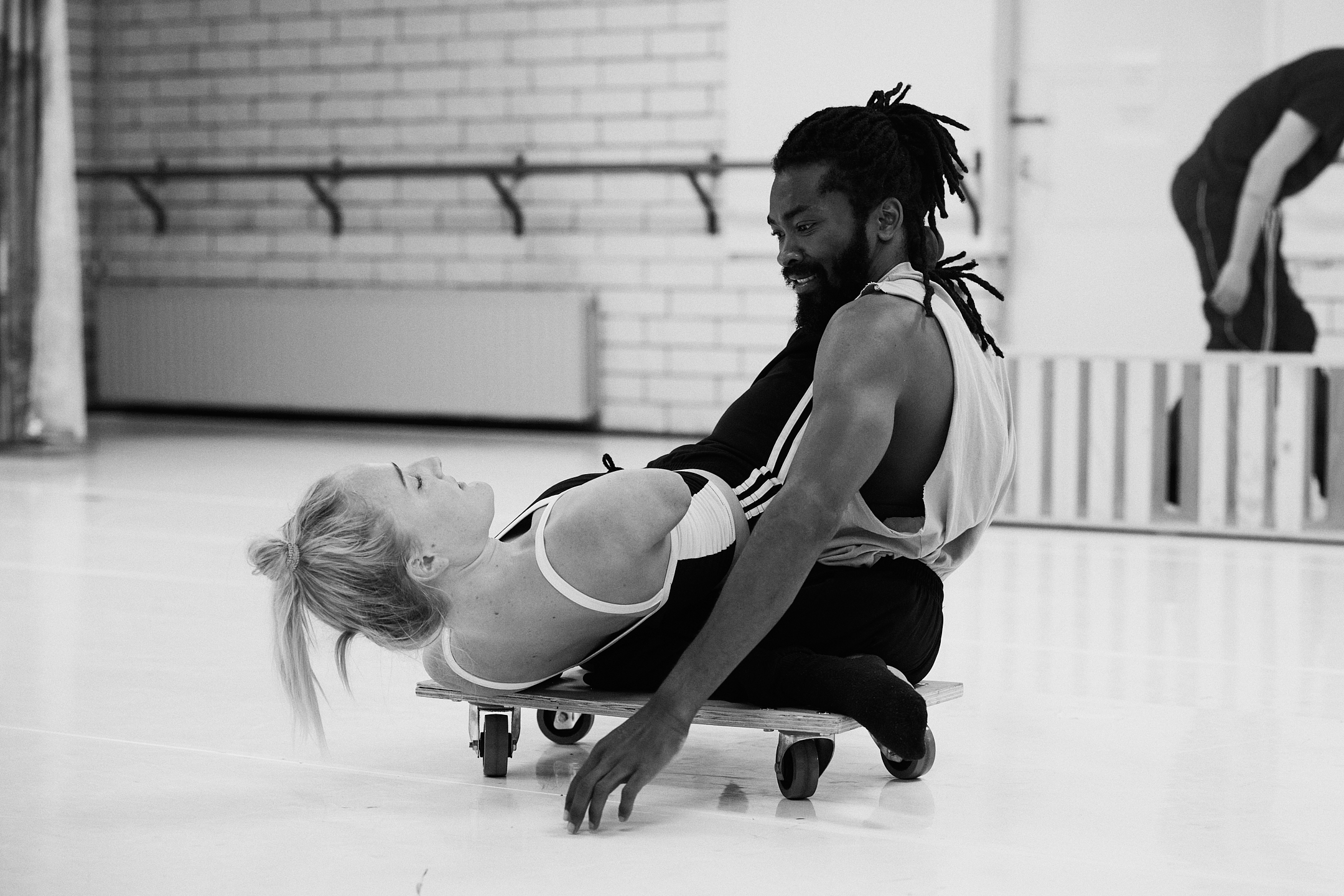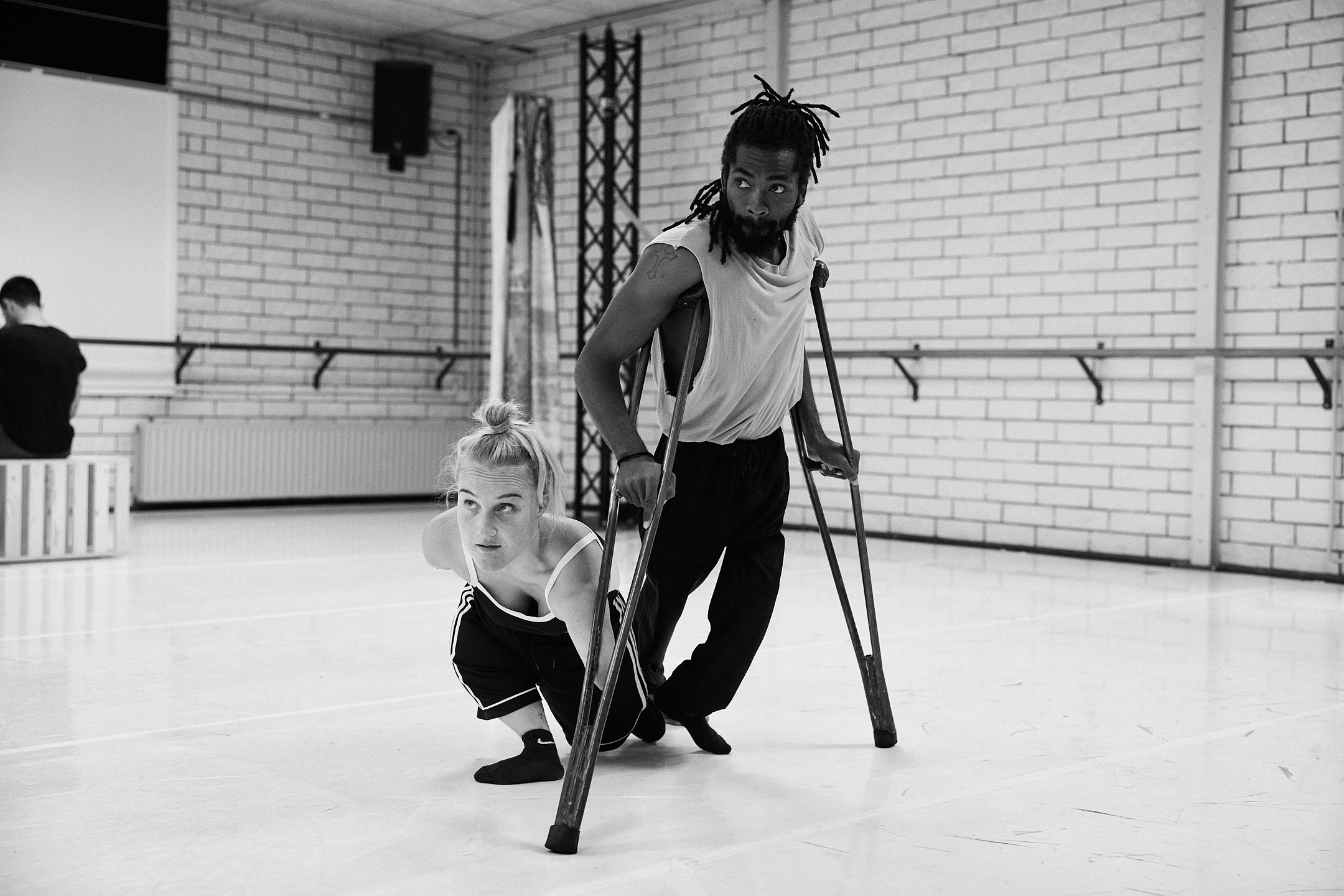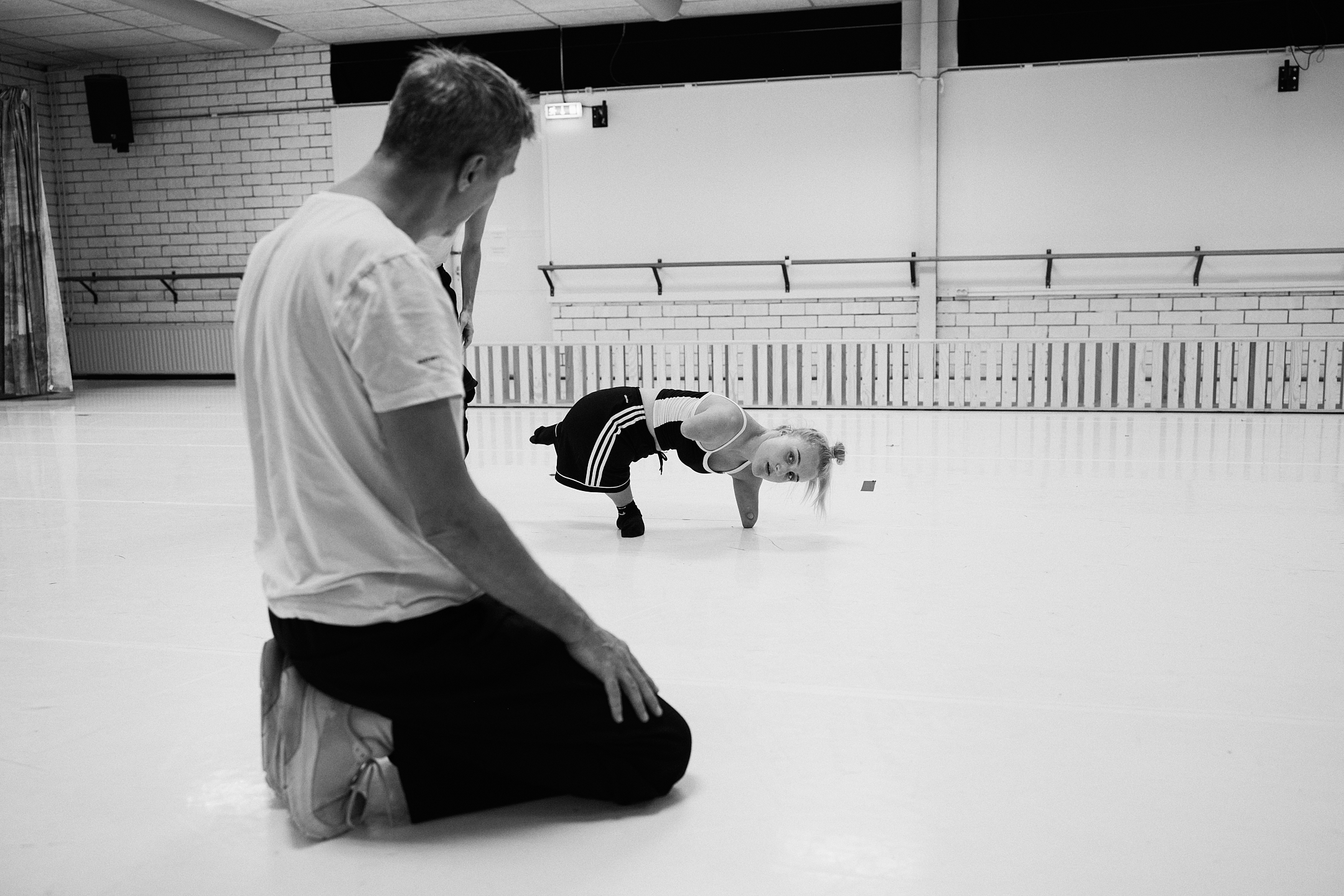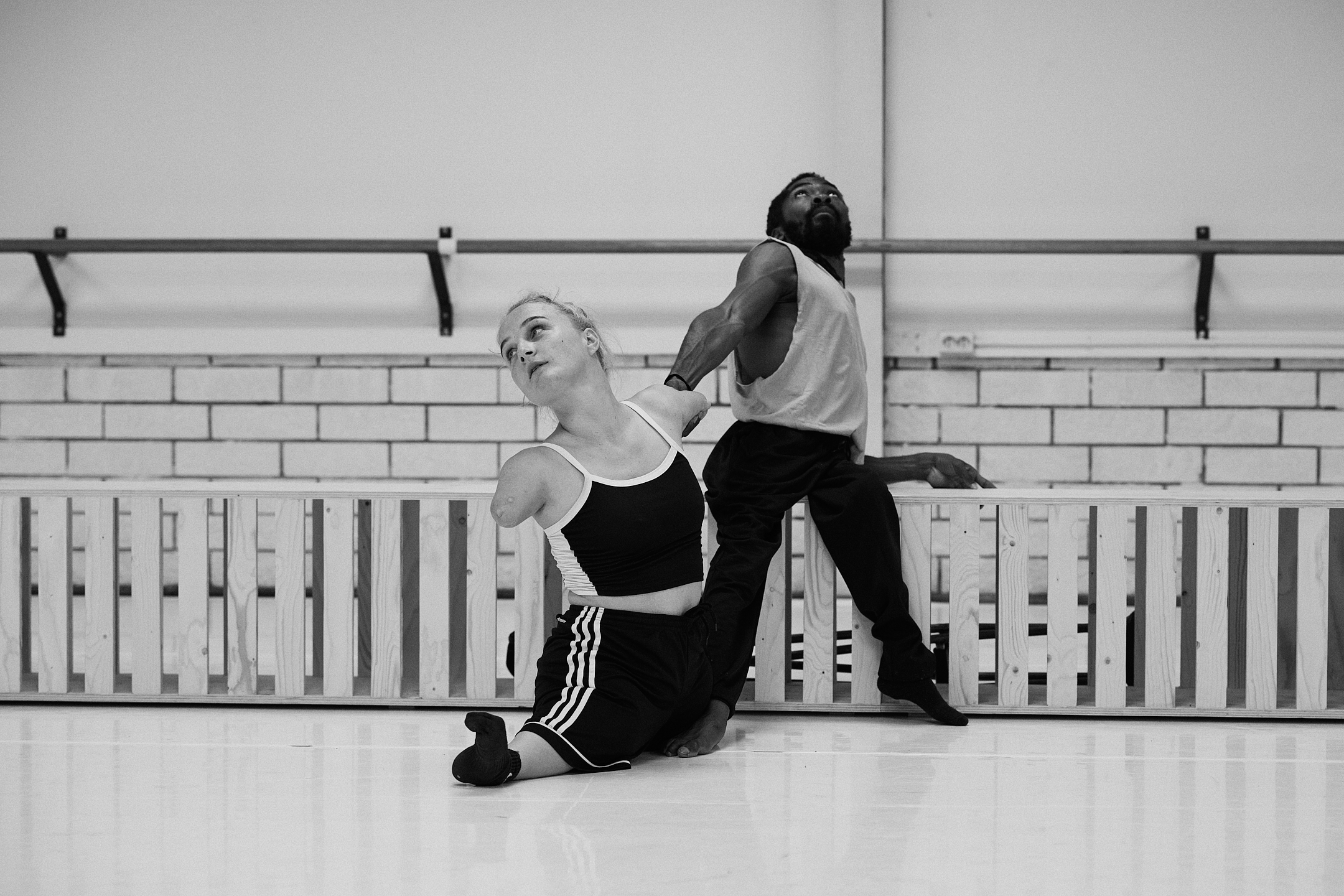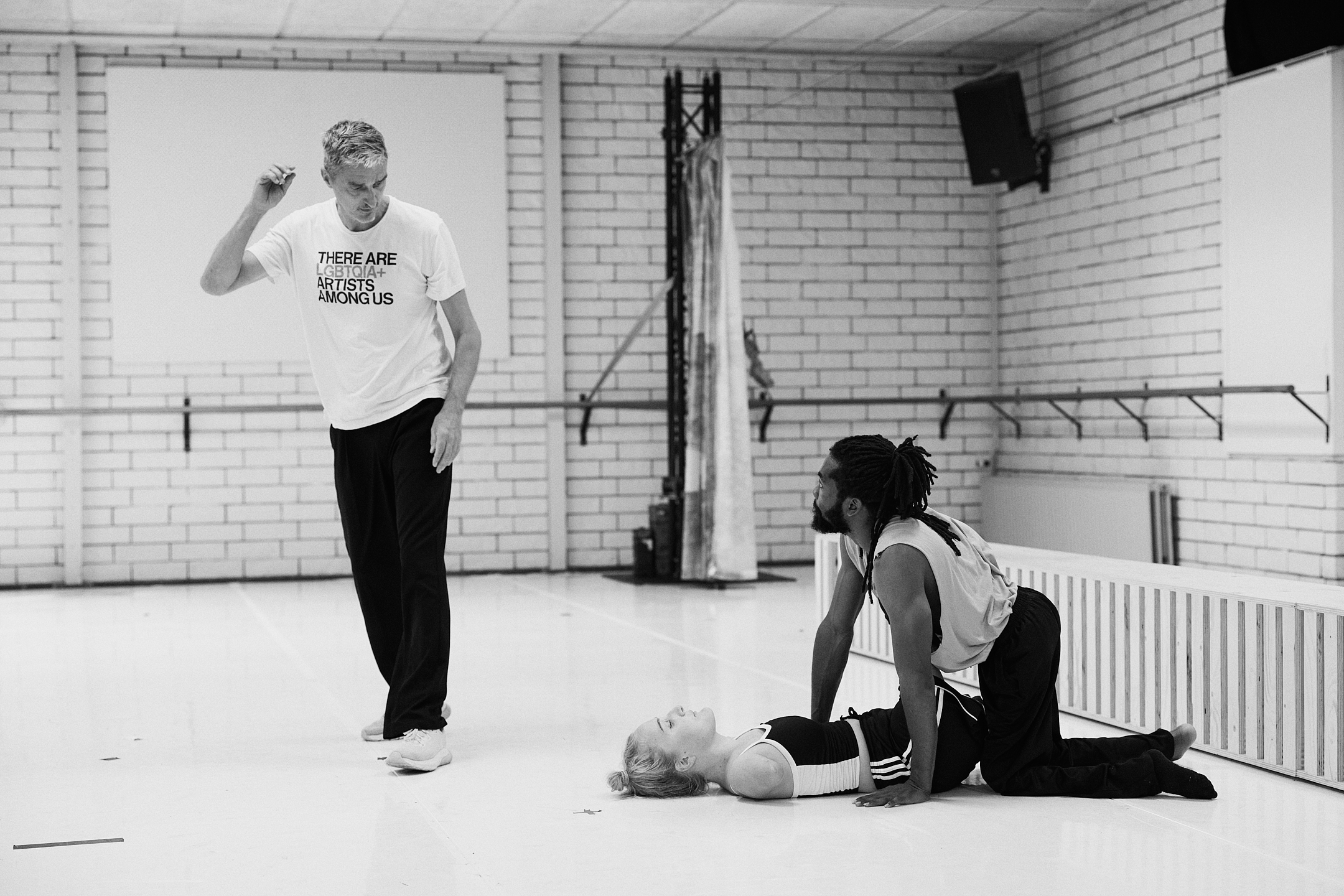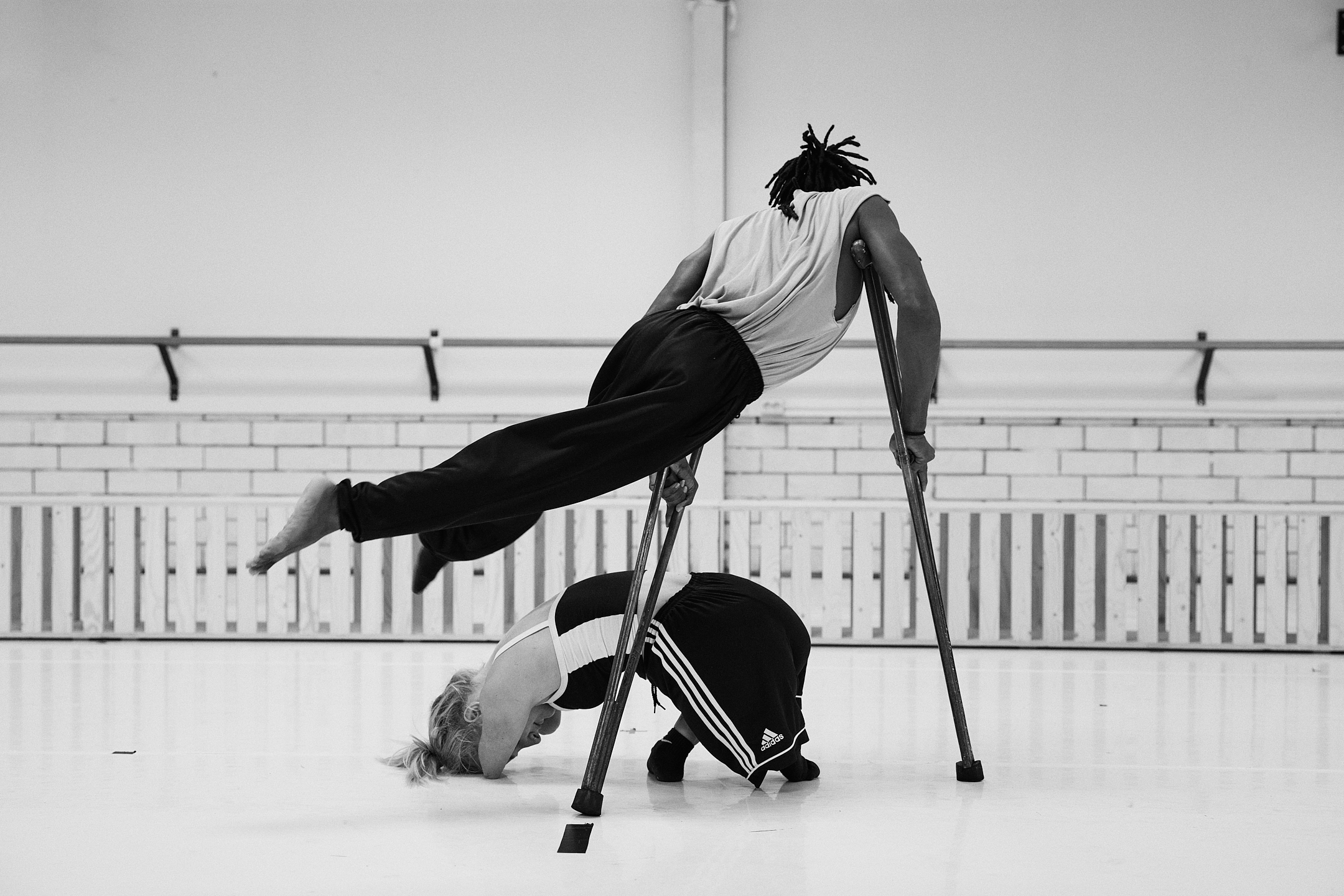Article Dance Magazine: dancing with a Ferrari
Article Dans Magazine: DANCING WITH A FERRARI
September 18, 2024
By Joost Groeneboer
Introdans is taking the next step. Until now, the inclusive programme De Ontmoeting (The Encounter) could only be seen during the End of Season performances. But now it has become a full part of Introdans’ regular productions. Starting in September, you can enjoy the special encounter Iungo, or “I connect,” as part of the HEROES programme. Dance Magazine spoke with Adriaan Luteijn, the artistic initiator Interaction & Inclusion and choreographer, as well as two remarkable guest dancers, Eva Eikhout and Joseph Tebandeke.
Adriaan
“I met Joseph two years ago at the international inclusive dance festival *BODY MOVES* in Johannesburg. He attended one of my workshops there. Last September, I saw him again at *JOMBA!* in Durban, where we presented a mini-version of the *HubClub*. Joseph is a modern dancer from Uganda who has developed his own dance language. He’s a fascinating man. When I heard he would be touring Europe this summer, I immediately asked him to join Iungo. Fortunately, it worked out, so he’s coming here. I’ve also been working with Eva for a few years. She has danced in Pro Forma and the HubClub, and even traveled with us to South Africa. Eva and Joseph have met before but have not danced together yet. Eva is currently making waves with a book she wrote, intriguingly titled This Is Not a Book by a Girl Without Arms and Legs.”
“Eva and Joseph are examples of people who dance with a different physical reality but are still quite independent. The collaboration with a third dancer didn’t happen because it turned out to be too difficult to tour with him. When working with inclusive dance, access needs to be well organized. You often rely heavily on the dancers’ caregivers or support staff, or you end up in a very expensive and complicated process, with costs that weigh on the artistic budget. Inclusion and diversity are high on the political and funding agenda, but people sometimes forget the behind-the-scenes aspects. How does a dancer with a disability get into the theater? Is there a quiet space? And so on.”
“Working with inclusion requires a different way of thinking. I’ve been organizing The Encounter for more than twenty years now, and our ballet masters and dancers have grown along with it. They know all the ins and outs. The younger dancers, especially those who are somewhat woke, are particularly open to it. They find it adventurous and new. I always hear that it has sparked something in them. There’s also growing attention to dance and society at the academies. Students can choose whether they want to pursue a more community-oriented path. I think it’s brave of Introdans to now tour with Iungo as part of the regular HEROES programme.”
“Iungo is a choreographic format. It starts with a long bench on which all the dancers sit—half are modern dancers from my world, and the other half are dancers from other worlds. The music and visuals are always the same, but the piece is never the same because I create it based on the people who are in it. So I start over every time.”
“In October, on the invitation of the Dutch Embassy, I’ll also be making a Chinese Iungo in Beijing. And for the World Expo 2025 in Osaka, I’ll create a piece with the Japanese inclusive choreographer and butoh star Dai Matsuoka, featuring Dutch and Japanese modern dancers and their (grand)parents. If you talk to Eva, ask her if she would have wanted to attend a dance academy if she’d had the chance. She’s definitely a modern dancer. And like her sisters, she’s super sporty. You don’t have to explain something to her twice—she just does it. You could ask Joseph the same question, by the way.”
Joseph
“I’m currently working in Vienna on the production Kingx & Qweens. And next week, I’ll be in Poland. I’m really looking forward to working with Adriaan in August. And with such a large company like Introdans. I met Adriaan in South Africa, where I took a workshop from him. Afterward, we exchanged many ideas. I remember the interaction of all the bodies on stage. The most inspiring thing was seeing Eva perform—how she created space. I’m excited to work with her, to dance with her, and to be close to her. She’s lovely, powerful, exciting, and full of ideas. What strength and energy!”
“How did I start dancing? I was an athlete in the Paralympics. I grew up in a very small village. People didn’t really understand what it meant to have a disability, not even my family. But I was convinced that there’s always something you’re good at, no matter what kind of body you have. So, I started doing sports. I won gold medals for my country, became an inspiration to other athletes with disabilities, but always felt something was missing. Then, somehow, I ended up in a dance workshop. The more I danced and talked about it, the more I fell in love with modern dance. Everyone can dance, everyone can move, everyone can find peace within themselves.”
“Of course, I would have gone to a dance academy if I had the chance. But in Africa, there are no dance programs for people with disabilities, and I couldn’t attend the regular ones either. That was particularly frustrating. So I started looking for online dance classes. My first dance course was in Germany. I think I’ll learn a lot at Introdans. From their way of creating and how they work with dancers with disabilities. I think it will be a huge learning process for me, an amazing experience that I want to pass on to the younger generation.”
“What can the Introdans dancers learn from me? It’s always a process of sharing. To work with me, they need to understand my body. And I, to work with them, need to understand their way of life.”
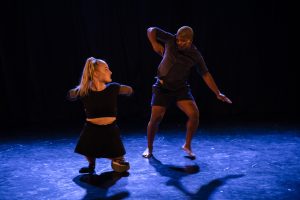
Eva Eikhout and Thapelo Kotlolo in Pro Forma-2 BODY MOVES [photo Herman Verwey]
Eva
“What does dancing mean to me? A lot. Dancing is pushing boundaries, boundaries I didn’t know could be pushed. It’s also about telling stories without words. As a presenter and speaker, I’m constantly using my mouth, but with dancing, I don’t have to.”
“I dance because I really enjoy it. I get so much out of it. It makes me physically stronger and happier. Sometimes I surprise myself with what I can do. At Introdans, I’m taken out of my comfort zone. That’s not something that comes naturally in a world where people already think it’s impressive that I can lift my own coffee cup. When people compliment you for things like that, you’re not really challenged. Adriaan never compliments me on everyday things. No, he just casually says: ‘You’re going to practice that pirouette now, I’m going to get coffee, and when I come back, you’ll have it down.’”
“The fact that I ended up at Introdans was actually a gift from the pandemic. To stay connected with the audience during the theater closures, they started organizing livestreams from their dance studios. And they needed a presenter for that. That’s how I came into the picture. Adriaan and I instantly felt a huge connection, really from the start. And that’s how things started rolling. At one point, he asked if I wanted to join a dance piece. I didn’t know how seriously to take his question. But when half my schedule was suddenly filled with rehearsals, I thought: okay, let’s do this!”
“After the pandemic—in 2020, I think—I danced in the performance Pro Forma. That was amazing; it’s when I fell in love with dance. The following season, I got to join again, and Adriaan invited me to festivals in Durban and Johannesburg. If you’d told me ten years ago that I’d be going to South Africa as a dancer, I would never have believed it, really! At the BODY MOVES festival, I danced with Thapelo Kotlolo, and once back in the Netherlands, we danced again. It’s so cool to make those connections around the world and meet extraordinary people.”
“I saw Joseph perform there too, but we’ve never danced together. I love that guy. In a way, he’s like me because he does what he loves as a person. He’s just very much Joseph. I think it’s always important to just be Eva and not ‘that girl without arms and legs.’ That’s why my book is titled the way it is. I think it’s amazing that Joseph is coming here. I’m really excited to dance with someone new.”
“Our performance is called Iungo. It’s the Latin word for ‘I connect.’ Connecting really fits me. I’m an extroverted person, I love being around people, and I find it amazing to meet new people. So, yes, connection is something I naturally have. You can connect just by chatting with someone, like we are now, but you can also connect by dancing with each other’s bodies. It can be a bit nerve-wracking at first, but also really fun, as I’ve learned. I have a special bond with the dancers at Introdans. They’re super enthusiastic. ‘Oh my God, how fun, you’re dancing with us again,’ they say. Whether they’re Introdans dancers or not, you always need a moment to adjust to each other’s bodies. Everyone can dance, everyone has their own body that moves in its own way.”
“Sometimes it feels like I’m dancing with a Ferrari. I don’t want to be left behind in that. At Introdans, I quickly felt like a full-fledged dancer. It’s a great mix. You notice that one dancer is a bit more cautious, while another throws me around more quickly, but it’s all good. Would I have wanted to go to a dance academy if I had had the chance earlier? It’s nice that Adriaan asks that. It’s a fair question. I think there’s a good chance I would have.”
“When I was younger, I did competitive swimming, and I was quite serious about it. But competitive swimming wasn’t for me. I felt very exposed and vulnerable in the water. You’re qualified based on your abilities, which means your opponents should be equal, but it never really felt that way. Plus, I simply realized that I’m not competitive at all. I don’t want to win. I’m much more of a team player. I want to do it together—that’s much more important to me. Looking back, I think that dancing would have been a 100,000% better match for me. Dancing is all about collaboration; you need each other on that dance floor.”
